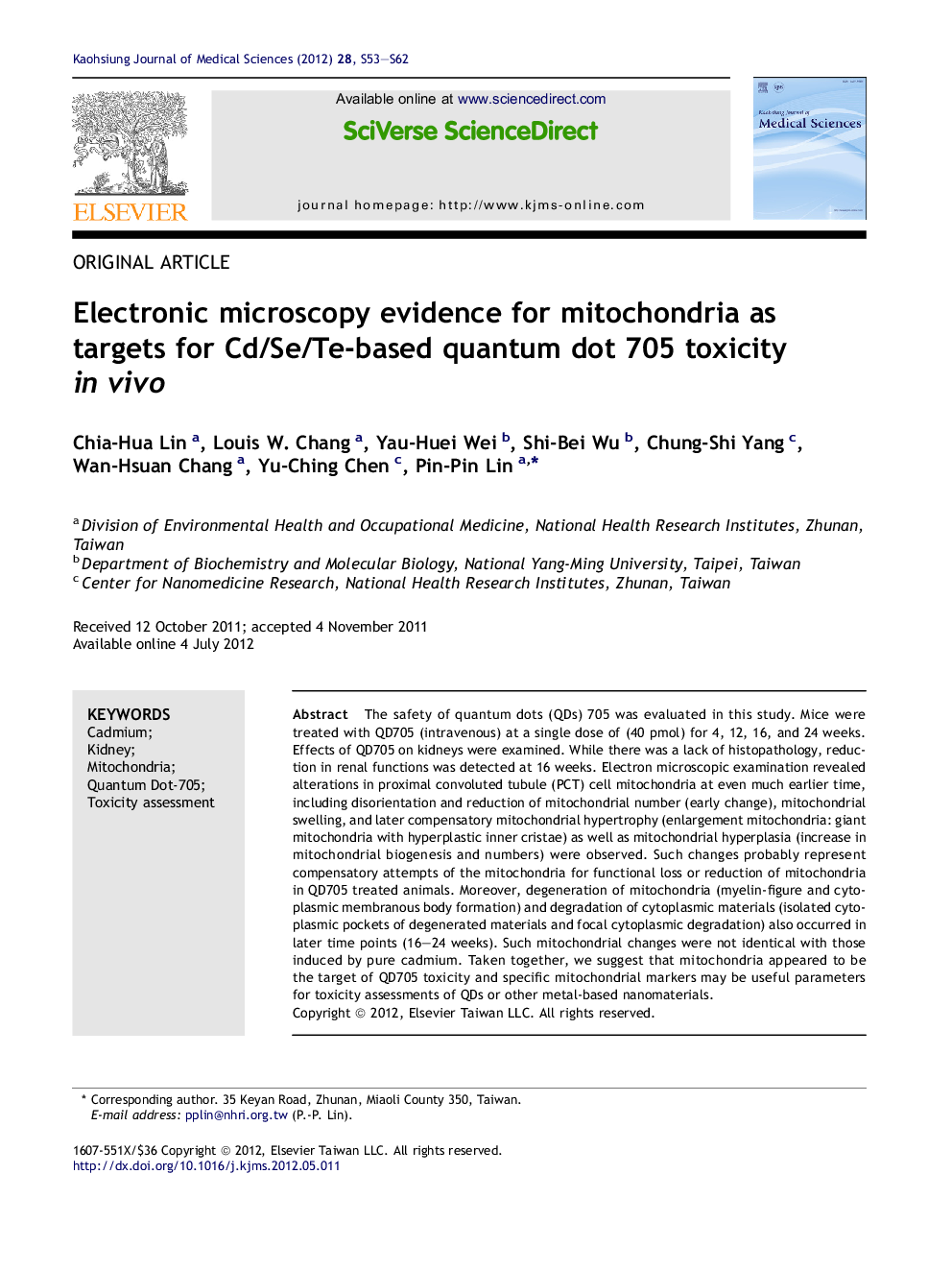| Article ID | Journal | Published Year | Pages | File Type |
|---|---|---|---|---|
| 3486024 | The Kaohsiung Journal of Medical Sciences | 2012 | 10 Pages |
The safety of quantum dots (QDs) 705 was evaluated in this study. Mice were treated with QD705 (intravenous) at a single dose of (40 pmol) for 4, 12, 16, and 24 weeks. Effects of QD705 on kidneys were examined. While there was a lack of histopathology, reduction in renal functions was detected at 16 weeks. Electron microscopic examination revealed alterations in proximal convoluted tubule (PCT) cell mitochondria at even much earlier time, including disorientation and reduction of mitochondrial number (early change), mitochondrial swelling, and later compensatory mitochondrial hypertrophy (enlargement mitochondria: giant mitochondria with hyperplastic inner cristae) as well as mitochondrial hyperplasia (increase in mitochondrial biogenesis and numbers) were observed. Such changes probably represent compensatory attempts of the mitochondria for functional loss or reduction of mitochondria in QD705 treated animals. Moreover, degeneration of mitochondria (myelin-figure and cytoplasmic membranous body formation) and degradation of cytoplasmic materials (isolated cytoplasmic pockets of degenerated materials and focal cytoplasmic degradation) also occurred in later time points (16–24 weeks). Such mitochondrial changes were not identical with those induced by pure cadmium. Taken together, we suggest that mitochondria appeared to be the target of QD705 toxicity and specific mitochondrial markers may be useful parameters for toxicity assessments of QDs or other metal-based nanomaterials.
